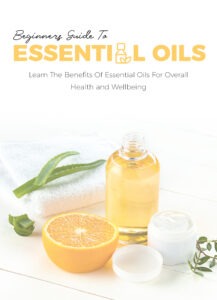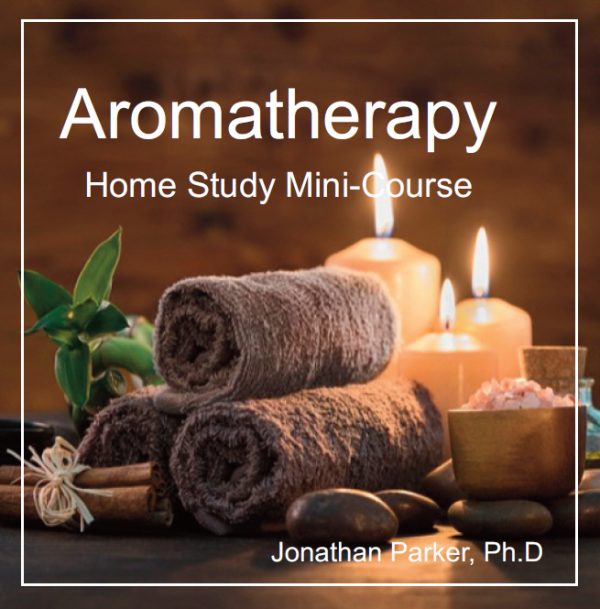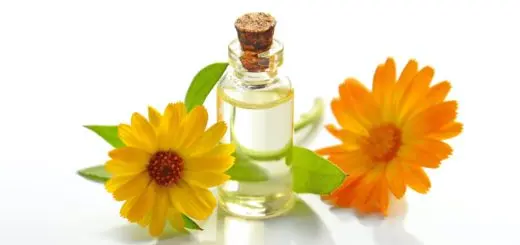Are Essential Oils Safe to Inhale? Facts for Users

Looking for more amazing products? Check out our online store and explore our collection here! Happy shopping!
Before diving in, please note: This post is for informational purposes only. If you’d like to know more about how we approach topics, feel free to check out our friendly Disclaimer Page.
Hey there, amazing readers! 
We’re committed to delivering quality posts, and your support (even just sticking around despite the ads) means everything to us. So, bear with us, and thanks for helping us keep the good vibes rolling. Now, on to the fun stuff!
TRANSLATE BUTTON AT THE END OF THE ARTICLE
A Quick Overview
Essential oils have swept through wellness circles like a breath of fresh air, offering fragrant experiences that many swear by.
But as with all things delightful, there are questions about safety, especially when it comes to inhalation.
Today, we’ll dive into the ins and outs of inhaling essential oils, exploring the benefits, risks, and everything in between.
So, grab your favorite scent, and let’s get started!
Understanding Essential Oils: A Brief Overview
Essential oils are concentrated extracts derived from plants.
Think of them as the aromatic lifeblood of flowers, leaves, bark, and even fruits.
They capture the essence or the "scent" of the plant, boasting unique aromatic properties.
I remember my first encounter with lavender oil—its soothing scent wrapped around me like a warm hug.
These oils have been used for centuries in various cultures for their therapeutic potentials.
They can promote relaxation, improve focus, uplift moods, and even support physical health.
The process of distillation or cold pressing allows us to harness the robust properties of these botanical wonders.
As I explored the world of essential oils, I found that each oil has its own personality, much like people.
Some are energizing, while others feel like a cozy blanket on a chilly evening.
The versatility of essential oils means they can be used in multiple ways: inhalation, topical application, or even in culinary creations.
However, not all oils are created equal.
Quality varies significantly among brands.
Some are pure, while others are diluted or contain synthetic additives.
This is why understanding what you’re working with is vital for safety and effectiveness.
The Benefits of Inhaling Essential Oils Daily
Inhaling essential oils can offer several benefits.
As I learned, the nose is a powerful sense, and it plays a role in our emotional and psychological states.
Here are some notable perks of inhaling these aromatic wonders:
Stress Relief: Many oils, like lavender and chamomile, have calming properties.
Breathing them in can help reduce anxiety and promote relaxation.
Improved Focus: Essential oils like peppermint and rosemary can enhance concentration.
I often keep a bottle of peppermint on my desk during long work hours!
Elevated Mood: Citrus oils like lemon and orange can uplift spirits, making them perfect for those gloomy days.
Respiratory Support: Inhaling oils like eucalyptus can help with congestion and respiratory issues.
It’s like having nature’s decongestant at your fingertips.
Better Sleep: A whiff of lavender before bedtime can set the stage for a peaceful night’s sleep.
I can attest to this—I’ve had many a restful night thanks to it!
Discover "Beginner's Guide to Essential Oils"

Enhanced Memory: Some studies suggest that specific oils can aid memory retention, making them perfect for students during exam seasons.
Natural Air Freshener: Instead of chemical-laden sprays, essential oils can freshen the air with delightful scents.
Immune Boosting: Certain oils have antibacterial properties, potentially supporting your immune system when inhaled.
Pain Relief: Oils like peppermint can provide relief from headaches and muscle tension through inhalation.
Mindfulness and Meditation: Many use essential oils to enhance their meditation practices, creating a serene space for reflection.
Common Essential Oils and Their Aromatic Properties
Each essential oil has its own distinct aroma and benefits, making it essential to know what you’re dealing with.
Here’s a rundown of some popular oils and their characteristics:
Lavender: Known for its calming properties, lavender oil smells sweet and floral.
It’s perfect for promoting relaxation and better sleep.
Peppermint: Refreshing and invigorating, peppermint has a cool, minty aroma that can energize and enhance focus.
Eucalyptus: With its sharp, camphorous scent, eucalyptus is excellent for respiratory support, especially during cold seasons.
Tea Tree: This oil has an earthy aroma and is renowned for its antiseptic qualities.
It can help purify the air.
Lemon: Bright and zesty, lemon oil has uplifting properties, making it a go-to for boosting mood and energy levels.
Frankincense: Deep and resinous, frankincense is often used in spiritual practices for its grounding effects.
Rosemary: Its woodsy scent promotes clarity and can aid in memory retention—perfect for study sessions.
Chamomile: Sweet and herbaceous, chamomile oil is excellent for calming nerves and promoting sleep.
Ylang Ylang: This oil has a rich, floral scent and is known for its ability to reduce stress and promote feelings of romance.
Bergamot: With its citrusy and floral notes, bergamot is uplifting and can help alleviate feelings of stress and anxiety.
Safety First: Are Essential Oils Safe to Inhale?
Now that we’ve established the allure of essential oils, let’s tackle the big question: Are they safe to inhale?
Generally speaking, many people safely enjoy inhaling essential oils.
However, there are nuances to consider.
Inhaling pure essential oils occasionally can be a delightful experience, but it’s essential to practice moderation.
I often remind myself that just because something is natural doesn’t mean it’s risk-free.
The potency of essential oils means that breathing them in concentrated forms can lead to adverse reactions in some individuals.
The way we inhale essential oils also matters.
Diffusing oils into the air can be a safe method, as it disperses the oils more evenly.
On the other hand, direct inhalation from the bottle or using excessive amounts can be overwhelming.
It’s also important to note that sensitive individuals, including those with respiratory conditions, may need to exercise more caution.
Always listen to your body—if something feels off, it’s best to stop and reassess.
Potential Risks of Inhaling Essential Oils Explained
While inhaling essential oils can offer many benefits, it’s crucial to be aware of potential risks.
Here’s what I’ve learned:
Allergies and Sensitivities: Some people may have allergies or sensitivities to specific oils, leading to respiratory issues or skin reactions.
Overexposure: Too much inhalation can overwhelm the senses, causing headaches, dizziness, or nausea.
Moderation is key.
Asthma Concerns: Individuals with asthma may experience flare-ups from certain oils, especially synthetic ones.
Always consult with a healthcare provider if you have asthma.
Chemical Additives: Oils with synthetic fragrances or additives can cause adverse reactions.
Stick to pure, high-quality oils when possible.
Pregnancy and Nursing: Some oils may not be safe during pregnancy or while breastfeeding.
It’s best to consult with a healthcare professional.
Young Children: Certain oils may not be suitable for children under two.
Always do your research and consult experts if unsure.
Pets: Some oils can be toxic to pets, particularly cats and dogs.
It’s vital to ensure that your chosen oils are safe for your furry friends.
Skin Sensitivity: While this primarily concerns topical application, inhaling oils after applying them to the skin can cause irritation.
Interactions with Medications: Essential oils can sometimes interact with medications, so discussing with a healthcare professional is wise.
Psychological Effects: Some oils can evoke strong emotional responses, which may not always be positive for everyone.
How to Choose Quality Essential Oils for Safety
Finding the right essential oils is crucial for both safety and effectiveness.
Let’s explore how to select quality oils:
Look for Pure Oils: Ensure the label states "100% pure essential oil." This indicates no additives or synthetic ingredients.
Check for Transparency: Reputable brands often provide information about the source of their oils and how they are extracted.
Review Lab Testing: Some brands conduct third-party testing for purity and potency.
Look for those with published results.
Avoid Low-Cost Oils: If an oil seems too cheap, it might be diluted or of inferior quality.
Quality oils often come at a higher price.
Read Reviews: Look for user reviews and testimonials to gauge the effectiveness and safety of the product.
Packaging Matters: Dark glass bottles protect oils from light, which can degrade their quality.
Avoid plastic containers.
Research the Brand: Trustworthy companies usually have a solid reputation and clear contact information for customer inquiries.
Seek Expert Recommendations: Aromatherapists and health professionals can guide you in choosing the right oils.
Be Mindful of Labels: Terms like "fragrance oil" or "nature-identical oil" may indicate synthetic components.
Avoid Blends Without Ingredient Lists: If an oil is marketed as a blend, check to see if it lists all the ingredients.
Guidelines for Safe Inhalation Techniques
To maximize the benefits while minimizing risks, follow these guidelines for safe inhalation:
Use a Diffuser: This is one of the safest ways to enjoy essential oils.
It disperses the oil into the air in safe concentrations.
Direct Inhalation with Caution: If inhaling directly from the bottle, do so sparingly.
Just a couple of deep breaths can be enough.
Dilution: For added safety, consider diluting oils in a carrier oil before inhalation, especially if you’re new to the experience.
Limit Exposure Time: When using a diffuser, run it for 30-60 minutes at a time, allowing for breaks.
Ventilation is Key: Ensure the area is well-ventilated.
This helps disperse oils and reduces the risk of overwhelming scents.
Stay Hydrated: Inhaling essential oils can sometimes lead to dryness.
Keep water handy to stay hydrated.
Listen to Your Body: If you feel any discomfort, stop using the oil immediately and assess your reaction.
Use Safe Oils: Stick to oils known for their safety profiles, especially if you’re sharing the space with others.
Consult Experts: If you’re unsure about which oils to use or how to use them, seek advice from trained professionals.
Keep Away from Sensitive Areas: Avoid inhaling oils in close proximity to sensitive areas like the eyes and face.
Essential Oils: When to Avoid Inhalation Completely
While many oils are safe and beneficial, there are specific instances when avoiding inhalation is best.
Here’s what I’ve discovered:
Pregnancy: Certain essential oils can cause complications during pregnancy.
Always check with a healthcare provider.
Asthma and Respiratory Issues: If you have chronic respiratory issues, consult a doctor before using essential oils.
Infants and Young Children: Many oils are unsuitable for very young children.
Always research safety before using them around kids.
Certain Medical Conditions: Individuals with specific medical conditions should avoid certain oils.
Always consult with a healthcare professional.
Allergic Reactions: If you have allergies to certain plants, avoid oils derived from them.
During Anesthesia or Surgery: It’s best to avoid using essential oils before or after surgery, as they can interact with anesthesia.
When Ill: If you’re experiencing acute respiratory issues or infections, consult a doctor before inhaling oils.
Recent Skin Treatments: Avoid inhaling oils after recent skin treatments that may react with the oils.
Tips for Safe Use in Homes with Pets and Kids
If you have children or pets, you’ll want to take extra precautions when using essential oils.
Here are my top tips for safe use:
Research Each Oil: Some oils can be toxic to pets or children.
Always do your homework before using a new oil.
Use Diffusers Wisely: Ensure diffusers are placed where pets and children can’t easily access them.
Ventilation is Crucial: Always use essential oils in well-ventilated areas to reduce the concentration in the air.
Limit Direct Inhalation: Avoid having kids or pets inhale oils directly from the bottle or in high concentrations.
Dilution is Key: Dilute oils before use, and consider opting for lower concentrations around sensitive individuals.
Select Pet-Safe Oils: Consider using oils known to be safe for pets, like lavender or chamomile, in moderation.
Monitor Reactions: Keep an eye on how pets and kids respond to oils.
If you notice any signs of discomfort, stop using the oil immediately.
Educate Older Children: Teach older kids about essential oils and how to use them safely.
This helps them understand why they shouldn’t use them recklessly.
Avoid Certain Oils: Steer clear of oils like tea tree and citrus oils around pets, as they can be harmful.
Involve the Family: Make essential oil use a fun family activity by exploring safe options together while discussing the benefits and precautions.
DIY Blends: Crafting Safe Aromatic Experiences
Creating your unique blends can be an exciting journey into the world of scents.
Here’s how to craft safe aromatic experiences at home:
Start with a Base: Begin with a base oil like coconut or jojoba if you’re planning to use it topically.
For diffusing, water is your best friend.
Choose Complementary Scents: Select scents that work well together.
For example, lavender and bergamot create a calming blend.
Keep It Simple: Start with two to three oils.
Once you get the hang of blending, expand your creative horizons!
Test Small Batches: Create small test batches before committing to larger quantities.
This helps avoid wasting oils if the blend doesn’t suit your taste.
Document Your Recipes: Keep a record of your blends, including ratios of each oil.
This way, you can reproduce your favorites!
Consider Seasonal Scents: Change your blends with the seasons.
Citrus oils for summer and warm, spicy oils for winter can create a cozy atmosphere.
Use Quality Ingredients: Ensure all oils are high-quality and pure.
This significantly affects the aroma and safety of your blend.
Experiment with Methods: Try different methods of using your blends, such as in a diffuser, bath, or topical application.
Gather Feedback: Share your blends with friends or family and ask for their feedback.
You might discover new favorites together!
Have Fun: Most importantly, have fun with your blends!
Aromatherapy is all about enjoyment and wellness.
Real User Experiences: Successes and Cautions
Hearing real-life stories makes the world of essential oils more relatable.
Here are some user experiences to consider:
A Friend’s Calm: A friend of mine swears by lavender oil.
After a particularly stressful day, she diffuses it in her bedroom, and it works like magic!
The Headache Relief: I’ve heard from many who use peppermint oil for headaches.
A simple inhalation or a drop diluted in a carrier oil has provided them with quick relief.
Kids and Citrus: A mom I know loves using lemon oil in her home.
It brightens the space and uplifts her kids’ moods during homework time!
Pet Concerns: One of my pals learned the hard way that not all oils are pet-friendly.
She had to remove tea tree oil from her home after her cat showed signs of distress.
The Sleep Struggle: Another friend used chamomile oil to create a bedtime ritual for her children, resulting in happier, more peaceful evenings.
Cautionary Tales: I once heard from someone who experienced headaches from overusing eucalyptus oil.
Moderation and ventilation are crucial.
Self-Care Rituals: Many users have shared how incorporating essential oils into their self-care routines has transformed their relaxation practices.
The DIY Adventure: One of my friends got into DIY blends and created a signature oil for her yoga practice.
It added a beautiful ambiance to her sessions.
Sharing is Caring: Several users have found joy in sharing their blends with friends, creating a sense of community around aromatherapy.
Personal Preferences: Each user’s experience varies, making it essential to find what works for you—there’s no one-size-fits-all solution.
Final Thoughts: Enjoying Aromatherapy Safely
Inhalation of essential oils can be a delightful and beneficial experience, but safety should always be top of mind.
As we’ve seen, these potent plant extracts can elevate our moods, enhance our well-being, and create inviting atmospheres.
However, it’s essential to know the best practices and potential pitfalls.
By choosing quality oils, employing safe inhalation techniques, and being mindful of personal sensitivities, we can safely enjoy the aromatic benefits that essential oils offer.
After all, the goal is to enhance our lives, not complicate them!
So, whether you’re diffusing lavender for a calming night or energizing your workspace with peppermint, embrace the aromatic journey ahead.
Now, grab your favorite oil, take a deep breath, and immerse yourself in the beautiful world of aromas—safely and joyfully!

The Enlightenment Journey is a remarkable collection of writings authored by a distinguished group of experts in the fields of spirituality, new age, and esoteric knowledge.
This anthology features a diverse assembly of well-experienced authors who bring their profound insights and credible perspectives to the forefront.
Each contributor possesses a wealth of knowledge and wisdom, making them authorities in their respective domains.
Together, they offer readers a transformative journey into the realms of spiritual growth, self-discovery, and esoteric enlightenment.
The Enlightenment Journey is a testament to the collective expertise of these luminaries, providing readers with a rich tapestry of ideas and information to illuminate their spiritual path.
Our Diverse Expertise
While our primary focus is on spirituality and esotericism, we are equally passionate about exploring a wide range of other topics and niches 

To ensure we provide the most accurate and valuable insights, we collaborate with trusted experts in their respective domains 
Our blog originally focused on spirituality and metaphysics, but we’ve since expanded to cover a wide range of niches. Don’t worry—we continue to publish a lot of articles on spirituality! Frequently visit our blog to explore our diverse content and stay tuned for more insightful reads.
Hey there, amazing reader! 
Check out our store here and take a peek at some of our featured products below! Thanks for being awesome!
Beginner's Guide to Essential Oils
Dive into the world of essential oils with this easy-to-follow guide! Perfect for anyone starting their journey, this e-book reveals how to use essential oils safely and effectively to enhance your well-being.
Inside, you'll learn:
- The top essential oils for relaxation, focus, and energy.
- Simple DIY recipes for blends, diffusers, and skincare.
- Tips on choosing high-quality oils and proper usage.
Discover the natural way to elevate your mind, body, and home.
Start your essential oil journey today!












